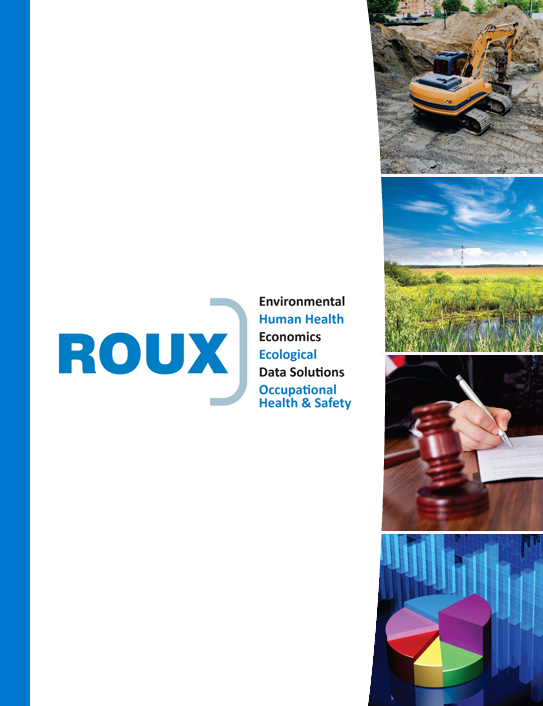EPA Finalizes Federal Drinking Water Standards and California Establishes Public Health Goals
Federal PFAS MCLs
On April 10, 2024, the United States Environmental Protection Agency (EPA) finalized a National Primary Drinking Water Regulation (NPDWR) establishing legally enforceable Maximum Contaminant Levels (MCLs) as well as non-enforceable Maximum Contaminant Level Goals (MCLGs) for six per- and polyfluoroalkyl substances (PFAS) in drinking water. These include perfluorooctanoic acid (PFOA), perfluorooctane sulfonic acid (PFOS), perfluorohexane sulfonic acid (PFHxS), perfluorononanoic acid (PFNA), hexafluoropropylene oxide dimer acid (HFPO-DA, commonly known as GenX Chemicals), and perfluorobutane sulfonic acid (PFBS):

Roux previously covered the EPA’s proposed NPDWR released March 14, 2023. Aspects that were ultimately changed in the final rulemaking based on public comments include:
- PFHxS, PFNA, and HFPO-DA (GenX) each are individually regulated in addition to their inclusion in the mixture MCL defined by the HI.
- Applying the mixture MCL requires presence of two or more PFAS versus one or more.
- The deadline for public water systems (PWSs) to comply with the MCLs is now 5 years instead of 3 years. PWSs must conduct compliance monitoring of these PFAS beginning in 2027 and make the data publicly available, but it is not until 2029 when PWSs must notify the public of MCL exceedances and implement solutions to reduce these PFAS to levels at or below the applicable MCLs.
Federal PFAS MCLs were based upon the most sensitive human health endpoints identified by the EPA, none of which are cancer endpoints. For PFOA, this health endpoint is the co-critical effects of decreased vaccine response (i.e., for tetanus and diphtheria antibodies), decreased birth weight, and increase cholesterol. The PFOS MCL uses decreased birth weight and increased cholesterol co-critical effects.
Whereas an MCL is the highest level of a contaminant allowed in public drinking water, an MCLG is the non-enforceable level below which there is no known or expected risk to human health. MCLs are set as close to MCLGs as feasible using the best available treatment technology and taking cost into consideration. While the EPA’s final economic analysis is that expected future human health benefits from MCL compliance exceed the costs for each regulatory alternative, that outcome arises in large part from using the lower (i.e., 2 percent) annual discount rate that the Office of Management and Budget only recently endorsed through its revision to Circular A-94.
California’s Public Health Goals
In addition, on April 5, 2024, California’s Office of Environmental Health Hazard Assessment (OEHHA) established public health goals (PHGs) for PFOA and PFOS in California drinking water systems. Similar with MCLGs, PHGs are non-enforceable standards. The OEHHA defines a PHG as the level of a drinking water contaminant at which adverse health effects are not expected to occur from a lifetime of exposure.

In contrast with the federal MCLs, California’s PHGs are based on cancer endpoints—the PFOA PHG is based on kidney cancer in human studies and the PFOS PHG is based on liver and pancreatic tumors in laboratory animals. The toxicology basis will be an important factor in evaluating human health risks for both regulatory compliance and litigation issues.
Are More PFAS Regulations Coming?
Almost certainly. Here are some of the in-progress regulatory changes we are tracking:
- New State Remediation Standards. States that use drinking water standards as remediation standards will likely have to update their remediation standards to align with the EPA’s PFAS MCLs. This may include adding compounds addressed by the EPA’s MCL that are not currently regulated by the state and lowering standards to align with the new MCLs. States that do not currently have remediation standards for PFAS may see new standards.
- Hazardous Substance Designation for PFOA and PFOS. The EPA is finalizing rulemaking to designate PFOA and PFOS as “hazardous substances” under the Comprehensive Environmental Response, Compensation, and Liability Act (CERCLA), commonly known as Superfund. The proposed designation has been pending since 2022. Since that time, there have been proposed bills in Congress and Congressional hearings discussing exceptions or protections from liability for certain users and passive receivers of PFOA and PFOS (e.g., water and wastewater utilities), but no definitive action has been taken and no firm timeline for finalizing the rule has been established by the EPA. The expected designation of PFOA and PFOS as hazardous substances will open up many new fronts in management of PFAS liabilities, from expanded consideration in due diligence and American Society for Testing and Materials (ASTM) Phase Is, to reopening the cleanup of Superfund sites.
- More PFAS Compounds of Concern. These MCLs may not be the end of the line for regulation of PFAS in drinking water. The Fifth Unregulated Contaminant Rule (UCMR5) requires upwards of 10,000 water utilities—including some serving as few as 3,300 people—to monitor for 29 PFAS compounds. The UCMR5 findings, including frequency and level of detection, combined with risk assessments, may lead to additional PFAS added to the list of PFAS MCLs. Furthermore, while PFOA and PFOS are in the first round of potential designation of hazardous substances under CERCLA, the EPA is currently investigating the inclusion of seven additional PFAS, certain PFAS precursors, and “Categories of PFAS” through an advance notice of proposed rulemaking.
What can Roux do to help?
In relation to the new federal PFAS MCLs and California’s public health goals, Roux can offer:
- HI calculation assistance;
- Technical support for litigation and compliance;
- Human health risk assessment, including cancer and non-cancer effects; and
- Economic support quantifying liabilities and damages.
Are you interested in one of the services listed above? Do you need to develop a strategy to manage the ever-changing PFAS regulatory landscape? Please reach out below to hear from one of our experts.

